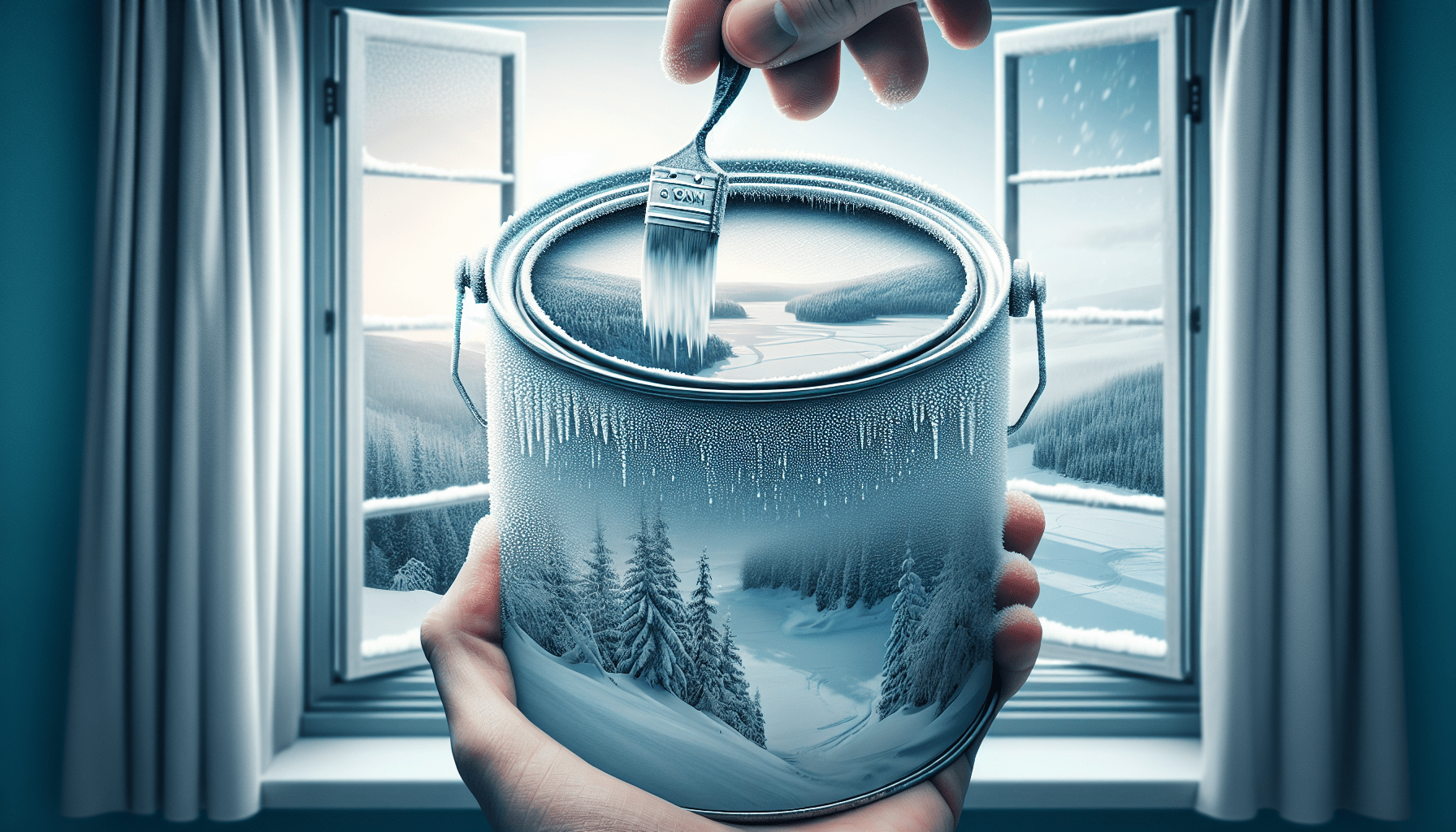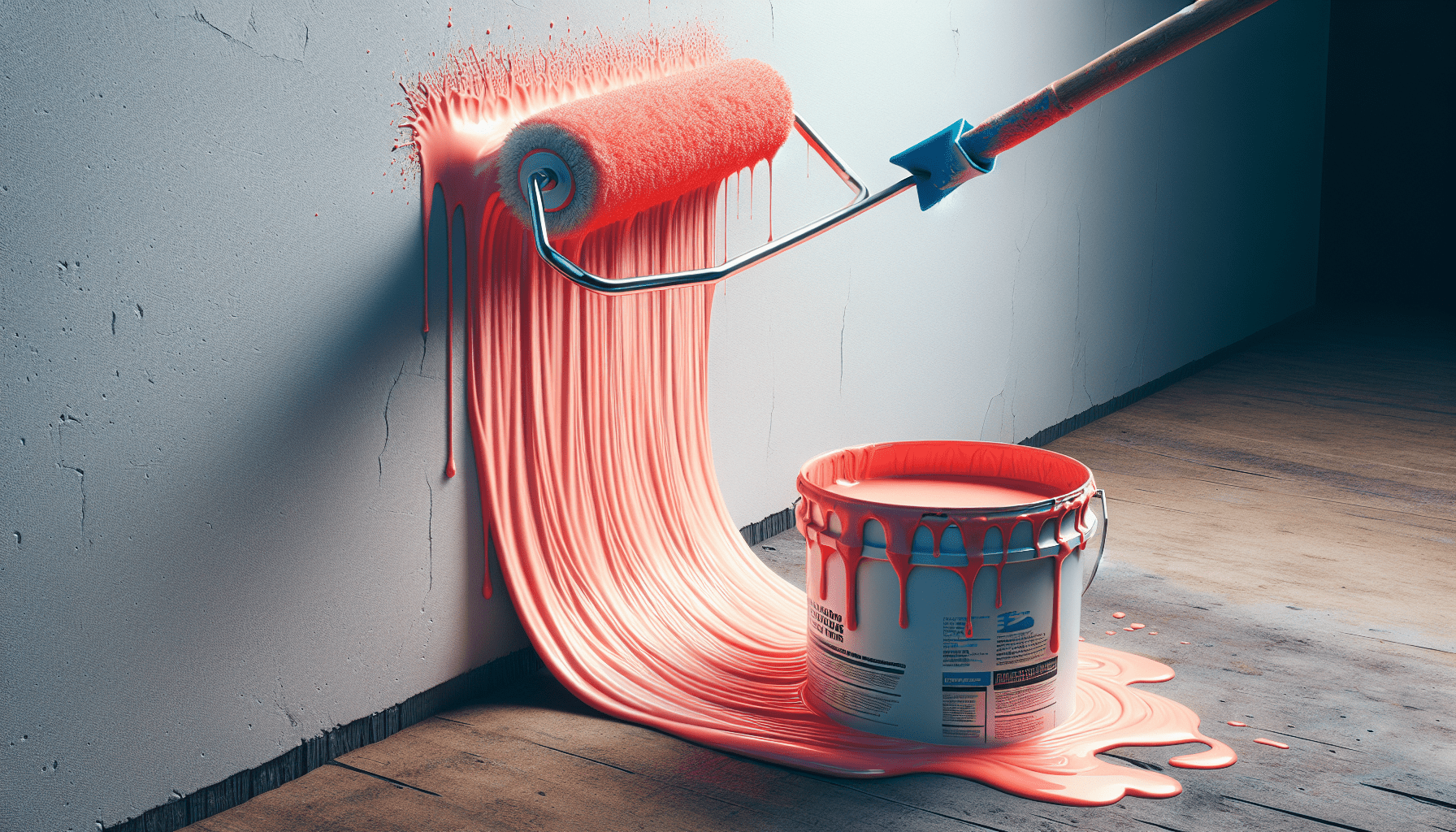When it comes to painting the interior of your home, it is essential to consider which type of paint is suitable. The question arises: can you use exterior latex paint inside? While exterior latex paint may seem like a viable option due to its durability and weather resistance, it is important to note that there are several factors to consider before doing so. Understanding the potential risks and benefits associated with using exterior latex paint inside will guide you in making an informed decision for your home improvement project.
Types of Paint
Interior Latex Paint
Interior latex paint is formulated specifically for use inside buildings. It is designed to withstand the conditions and requirements of indoor environments. Interior latex paint is water-based and typically has a lower volatile organic compound (VOC) content compared to other types of paint. It provides a smooth and durable finish, making it ideal for walls, ceilings, and other interior surfaces.
Exterior Latex Paint
Exterior latex paint, on the other hand, is formulated to withstand the harsh outdoor elements. It is designed to protect surfaces from moisture, sunlight, and temperature changes. Exterior latex paint is also water-based but contains additives that provide extra durability and resistance to weathering. This type of paint is commonly used on exterior walls, doors, and trim.
Differences between Interior and Exterior Paint
While both interior and exterior latex paints are water-based and offer similar ease of application, they have significant differences in their formulations. The main distinction lies in the additives present in exterior latex paint that provide additional protection against factors such as UV radiation, mildew, and moisture. Interior latex paint may not offer the same level of durability or resistance to outdoor conditions.
Composition of Exterior Latex Paint
Water-Based Formulation
Like interior latex paint, exterior latex paint is also water-based. This means that it is primarily composed of water, making it easy to clean up with soap and water after application. The water-based formulation also contributes to lower levels of VOCs, which are harmful chemicals that can impact indoor air quality and human health.
Flexible and Durable Binders
What sets exterior latex paint apart from its interior counterpart are the binders used in its formulation. Exterior latex paint contains flexible and durable binders that allow the paint to expand and contract with temperature changes. This flexibility ensures that the paint does not crack or peel when exposed to the outdoor elements, providing a long-lasting finish.
Mildew and UV-resistant Additives
To protect exterior surfaces from mildew growth and the damaging effects of UV radiation, exterior latex paint incorporates additives with mildew and UV-resistant properties. These additives help prevent the growth of mold and mildew on painted surfaces and guard against the fading and discoloration caused by prolonged exposure to sunlight.

Application of Exterior Latex Paint
Suitable Surfaces for Exterior Paint
Exterior latex paint is suitable for a wide range of surfaces, including wood, metal, masonry, and stucco. It can be used on exterior walls, trim, doors, and other outdoor structures. However, it is important to ensure that the surface is clean, dry, and free of any peeling or loose paint before applying exterior latex paint.
Preparation and Priming
Before applying exterior latex paint, proper preparation is essential to ensure the longevity and effectiveness of the paint. This involves cleaning the surface to remove dirt, debris, and any loose paint. If there are areas with peeling or flaking paint, it is recommended to scrape or sand them away before priming the surface. Priming helps the paint adhere better and provides an even base for the topcoat.
Applying Exterior Paint Indoors
While exterior latex paint is primarily formulated for outdoor use, it can be used indoors in certain situations. However, it is important to note that there may be limitations and considerations when doing so. Exterior paint may have a stronger odor and longer drying time compared to interior paint, which can affect indoor air quality and inconvenience occupants. Additionally, exterior paint may not have the same features specifically designed for indoor use, such as resistance to stains or easy cleanability.
Potential Issues
Volatile Organic Compounds (VOCs)
One potential issue associated with exterior latex paint used indoors is the presence of VOCs. VOCs are released as the paint dries and can contribute to indoor air pollution. High levels of VOCs can cause respiratory irritation, headaches, and other health problems. It is advisable to choose low or zero VOC exterior latex paints if using them indoors to minimize these potential risks.
Odor and Off-Gassing
Exterior latex paint may produce a stronger odor compared to interior paint due to the additives and resins used in its formulation. This can be bothersome and may require proper ventilation during and after the painting process. Off-gassing, which refers to the release of volatile chemicals from the paint over time, can also be a concern when using exterior paint indoors. Adequate ventilation is crucial to dissipate any lingering odors and improve indoor air quality.
Longer Drying Time
Exterior latex paint generally has a longer drying time compared to interior paint. This can be attributed to the additional additives and binders that contribute to its durability and resistance to outdoor elements. The longer drying time may cause inconvenience when painting indoors, as it may take a longer time for painted surfaces to fully dry and be ready for use or additional coats of paint.
Lack of Indoor-Specific Features
Exterior latex paint is specifically formulated to meet the demands of outdoor conditions. It may lack certain features that are essential for indoor applications. For example, interior latex paint may offer better stain resistance, easier cleanability, and a wider range of finishes specifically designed for indoor use. These features may be absent in exterior paint, making it less suitable for certain indoor surfaces or areas prone to frequent stains or cleaning.

Health and Safety Considerations
Proper Ventilation
When using exterior latex paint indoors, proper ventilation is crucial to ensure a healthy and safe environment. Adequate airflow helps to minimize the concentration of VOCs and reduce the impact of strong odors. Opening windows, using fans, or utilizing exhaust systems can help improve air circulation and prevent the accumulation of harmful fumes.
Quality of Indoor Air
Painting indoors can potentially affect the quality of indoor air, especially if using exterior paint that contains higher levels of VOCs. Poor indoor air quality can lead to various respiratory problems and allergic reactions. Monitoring and maintaining good indoor air quality are essential, especially in enclosed spaces or areas with limited ventilation.
Use of Personal Protective Equipment (PPE)
When working with any type of paint, it is important to prioritize safety by using appropriate personal protective equipment (PPE). This may include wearing gloves, safety goggles, and a respirator mask to protect against fumes and chemical exposure. PPE can minimize the risk of skin irritation, eye damage, and respiratory issues associated with paint application.
Regulations and Guidelines
Environmental Protection Agency (EPA) Regulations
The Environmental Protection Agency (EPA) regulates the use and disposal of paints, including exterior latex paint, to minimize the impact on human health and the environment. It is important to be aware of any relevant regulations regarding the use of exterior paint indoors and to follow proper guidelines for handling and disposal.
Manufacturer’s Recommendations
To ensure optimal performance and safety, it is essential to consult the manufacturer’s recommendations and guidelines before using exterior latex paint indoors. Manufacturers often provide specific instructions on suitable applications, surface preparation, and any precautions or limitations associated with using their products indoors. Following these recommendations can help avoid potential issues and ensure satisfactory results.
Professional Advice
If you are unsure about whether or how to use exterior latex paint indoors, it is recommended to seek professional advice. Painters, contractors, or color consultants can provide expert guidance based on their experience and knowledge of various paint products. Home improvement store representatives can also offer valuable advice and recommendations based on your specific needs and circumstances.
Advantages of Exterior Latex Paint
Durability and Resistance to Weathering
One of the primary advantages of exterior latex paint is its durability and resistance to weathering. The additives and binders in exterior paint provide extra protection against moisture, sunlight, and temperature changes. This makes it a reliable option for exterior surfaces that are exposed to harsh outdoor conditions, ensuring a longer-lasting finish.
Wide Color Selection
Exterior latex paint offers a wide range of color options to choose from. This allows for greater creativity and customization when designing and painting outdoor spaces. Whether you prefer bold and vibrant hues or more subtle and earthy tones, there are countless color options available to suit your aesthetic preferences and complement your home’s exterior.
Availability and Cost-effectiveness
Exterior latex paint is widely available in various paint stores, home improvement centers, and online retailers. Its popularity and accessibility make it a convenient and cost-effective option for homeowners and professionals alike. With competitive pricing and a range of sizes and finishes, exterior latex paint offers an affordable and accessible solution for outdoor painting projects.
Alternatives to Exterior Latex Paint
Interior Latex Paint
For indoor applications, interior latex paint is generally more suitable than exterior paint. It is specifically formulated to meet the requirements of indoor environments, offering features such as better stain resistance, easy cleanability, and a wider range of finishes. Interior latex paint also typically has lower levels of VOCs, making it a healthier choice for indoor air quality.
Acrylic Paint
Acrylic paint is another alternative that can be used both indoors and outdoors. It has similar characteristics to latex paint, being water-based and low in VOCs. Acrylic paint is known for its quick-drying time, excellent color retention, and resistance to fading. It is suitable for a variety of surfaces and can provide a durable and attractive finish for both interior and exterior projects.
Milk Paint
Milk paint is a natural and environmentally friendly option that can be used indoors and outdoors. It is made from natural ingredients, including milk protein, limestone, and pigments. Milk paint offers a unique and distinct look, providing a matte finish with subtle color variations. While it requires additional steps for preparation and may not offer the same level of durability as latex or acrylic paint, milk paint can be a desirable choice for those seeking a more organic and traditional finish.
Consulting Professionals
Painter or Contractor
When in doubt about choosing the right paint or using exterior paint indoors, consulting a professional painter or contractor can provide valuable insights and expertise. Painters and contractors have experience working with different types of paint and can advise on the most suitable options for your specific needs. They can also ensure proper application techniques and offer guidance on surface preparation and maintenance.
Color Consultant
For those looking for guidance on color selection and coordination, a color consultant can be an invaluable resource. Color consultants are trained professionals who specialize in choosing paint colors that complement the architecture, style, and lighting of a space. They can help you determine the best color scheme for both interior and exterior surfaces, ensuring a cohesive and visually appealing result.
Home Improvement Store Representatives
When seeking advice on paint selection or usage, home improvement store representatives can provide helpful information and recommendations. They are knowledgeable about the different paint products available and can guide you through the selection process. Store representatives can also provide tips on surface preparation, application techniques, and any additional supplies or equipment needed for your painting project.
Conclusion
When considering using exterior latex paint indoors, it is essential to weigh the advantages and potential issues. While exterior latex paint can offer durability and resistance to weathering, it may have drawbacks such as higher VOC levels, stronger odors, longer drying time, and a lack of features specifically designed for indoor use. Proper preparation, ventilation, and adherence to safety guidelines are crucial when using any paint, especially in indoor settings. Consulting professionals and considering alternative paint options can help ensure a successful and satisfactory painting experience. By carefully considering the specific requirements and conditions, as well as consulting trustworthy sources, you can make an informed decision about using exterior latex paint inside while prioritizing health, safety, and the longevity of the painted surfaces.



